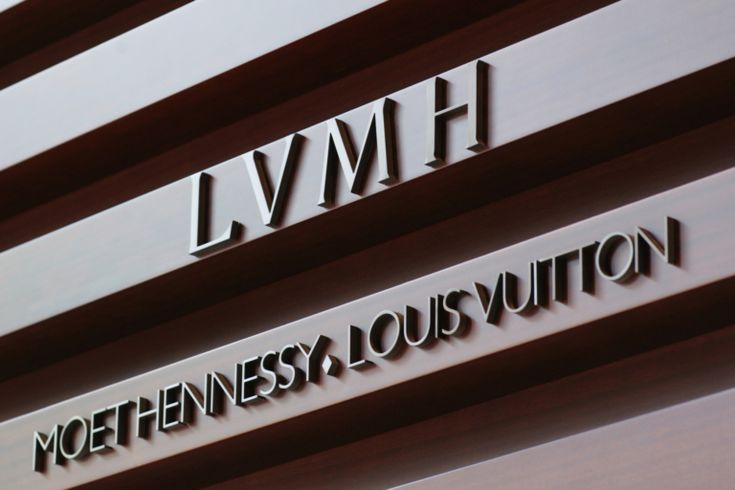LVMH: The Luxury Empire Shaping the World of Elegance and Innovation
Introduction
LVMH Moët Hennessy Louis Vuitton, commonly known as LVMH, is the world’s largest and most influential luxury goods conglomerate. This powerhouse combines over 75 prestigious brands, spanning fashion, cosmetics, jewelry, wines, and spirits. From its rich history to its modern-day significance, LVMH is not just a company—it’s a cultural phenomenon.
The Life of Bernard Arnault
- Early Life:
Born on March 5, 1949, in Roubaix, France, Bernard Jean Étienne Arnault displayed entrepreneurial flair from a young age. After studying at the prestigious École Polytechnique, Arnault joined his family’s construction business. - Entry into Luxury:
Arnault ventured into the luxury industry in 1984 by acquiring Boussac Saint-Frères, the parent company of Christian Dior. This marked the beginning of his dominance in the luxury market. - LVMH Leadership:
By 1989, Arnault became the majority shareholder, chairman, and CEO of LVMH. Under his leadership, LVMH expanded to include over 70 luxury brands, including Louis Vuitton, Sephora, and Dom Pérignon.
The Story
- Founding and Early Years
- Year Founded: 1987
- It was formed by the merger of Moët Hennessy and Louis Vuitton, combining expertise in luxury wines, spirits, and fashion.
- The company’s roots go back to 1854, when Louis Vuitton began as a trunk maker in Paris.
- Rise to Dominance
Under the visionary leadership of Bernard Arnault, LVMH expanded aggressively. By acquiring iconic brands like Christian Dior, Fendi, Bulgari, and Sephora, it became a global symbol of sophistication.
Daily Life Impacts
- Revolutionizing Luxury
It brought luxury to a global audience, redefining how people perceive and engage with premium goods. - Setting Trends
Through its brands, It influences global fashion and lifestyle trends, from runway designs to everyday elegance. - Cultural Enrichment
The Fondation Louis Vuitton, It’s art museum and cultural center, promotes contemporary art and fosters creativity. - Job Creation
With over 200,000 employees worldwide, It contributes significantly to the global economy. - Sustainability Leadership
The champions eco-friendly practices, blending luxury with responsibility through initiatives like reducing carbon footprints and supporting biodiversity.
Fascinating Facts
- Brands Owned: Over 75, including Louis Vuitton, Moët & Chandon, TAG Heuer, and Givenchy.
- Global Presence: LVMH operates in over 70 countries with more than 5,000 retail outlets.
- Revenue: $86 billion (2023).
- Largest Acquisition: Tiffany & Co. in 2021, valued at $15.8 billion.
- Art Contributions: The Fondation Louis Vuitton has hosted world-class exhibitions since 2014.
FAQs
Q1: What does stand for?
LVMH stands for Louis Vuitton Moët Hennessy, reflecting its origins in fashion and luxury spirits.
Q2: Who owns?
Bernard Arnault, one of the world’s wealthiest individuals, is the CEO and primary shareholder.
Q3: What makes unique?
Its ability to balance heritage with innovation while maintaining unparalleled quality and exclusivity.
Q4: How does contribute to society?
It supports arts, promotes sustainability, and preserves traditional craftsmanship through its brands.
Q5: Is a sustainable company?
Yes, It is committed to eco-conscious practices, including sustainable sourcing and energy-efficient operations.
Significance
- Cultural Icon:
It elevates global culture by preserving and celebrating the art of luxury. - Economic Giant:
As the world’s leading luxury conglomerate, it generates billions in revenue, influencing economies worldwide. - Pioneer in Craftsmanship:
It ensures that traditional artisanal skills are passed down through generations. - Innovation Hub:
By blending tradition with modernity, It remains at the forefront of technological and creative advancements.
Observance and Wishing
It’s milestones, like the launch of new products or anniversaries of iconic brands, are celebrated globally. Its achievements remind us of the power of vision, creativity, and persistence.
Why Matters to Society
isn’t just a luxury brand conglomerate—it’s a symbol of excellence and innovation. Its dedication to quality, sustainability, and cultural preservation sets a benchmark for industries worldwide.
Whether it’s the elegance of Louis Vuitton or the sparkling brilliance of Moët & Chandon, LVMH inspires people to embrace beauty and refinement in their lives.
Conclusion
It’s legacy is one of resilience, innovation, and cultural impact. It has transformed luxury into an accessible yet aspirational experience, inspiring millions to dream bigger.
With a commitment to excellence and a vision for the future, LVMH continues to shape the world of luxury, leaving a lasting imprint on society.










